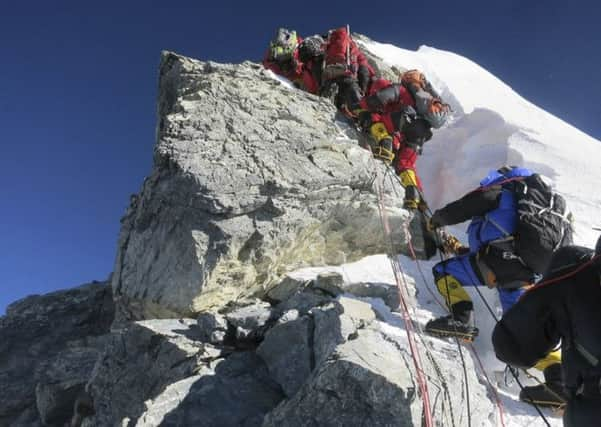Efforts to ease Everest climber congestion


One of the initiatives includes the introduction of separate fixed ropes for climbers ascending and descending near the summit to help ease the traffic, said tourism ministry spokesman Mohan Krishna Sapkota.
Everest has seen huge numbers attempt the climb in recent years.
Advertisement
Hide AdAdvertisement
Hide AdA team of government officials will be posted at the base camp located at 5,300 metres throughout the spring climbing season to monitor climbers and co-ordinate with expedition leaders. The move follows criticism that Nepal has done little to manage the growing number of climbers despite making millions of pounds in fees.
The nine-man team would also be able to stop any trouble, such as last year’s brawl between three foreign climbers and local Sherpa guides. It would include security personnel and would have the power to scrap the climbing permit and even order climbers to leave the mountain.
Mr Sapkota said the plan is to manage the flow of climbers working with expedition teams during the two or three opportunities in May when the weather is favourable for the climb above the South Col at 8,000 metres.
Climbers refer to it as the “death zone” because of there is insufficient oxygen to sustain human life for long and little chance of rescue should anyone get into difficulty. The separate ropes would allow the climbers returning from the summit to quickly get back to lower ground to rest while they would not be blocking fellow climbers on the way to the summit.
More than 800 climbers attempted to scale Everest during the 2013 spring season and the number is expected to be similar this year too, according to the mountaineering department.
More than 4,000 climbers have scaled Everest since 1953, when it was first conquered by Edmund Hillary and Sherpa Tenzing Norgay.
Everest has become a landmark for old and young, able bodied and disabled, to attempt.
Last year was notable for record setting. An 80-year-old Japanese mountain climber who had undergone heart surgery four times, became the oldest person to reach the summit.
Advertisement
Hide AdAdvertisement
Hide AdRaha Moharrak – who as with all women is prohibited from driving in her home country of Saudi Arabia – became the first Saudi woman to conquer the peak, while Sudarshan Gautam, a 30-year-old Nepali-born Canadian who lost both arms in an accident, became the first double amputee to conquer the summit.
But around 240 have lost their lives on the slopes.The worst year, in terms of deaths, was 1996 when 15 climbers died in the season, including nine in a single incident, as documented in Jon Krakauer’s book, Into Thin Air.
A close second was in 2012, when 11 climbers lost their lives. Many have never been found.